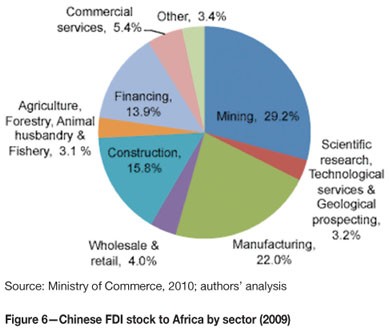China Industry Sectors
Post on: 16 Март, 2015 No Comment

google+
China has one of the most diverse spread of industrial production in the world, fitting for a country that is called ‘The Worlds Factory’. Since 1978, the nation has gradually reduced its reliance on state-owned enterprises (SOEs) though they still account for 46 percent of Chinas industrial output, down from 77.6 percent 35 years ago
Nonetheless, the government has in recent years renewed its drive to support state-owned enterprises in sectors it considers important to national economic security particularly natural resources, banking and telecommunications. In a major push to boost the state sector in 2003, Beijing set up the State-owned Assets Supervision and Administration Commission as a watchdog to expand and strengthen large industrial state enterprises.
Consequently SOEs, combined assets rose to 28 trillion yuan ($4.56) 2011 from 7.13 trillion yuan in 2002. Revenues have also soared from 3.36 trillion yuan to 20.2 trillion yuan.
Critics argued that the SOEs are stifling innovation and restricting opportunities for private companies. Though fewer in number than before, as a result of massive state consolidation, todays SOEs are far more powerful. As of 2012, large state-owned enterprises produced over 50 percent of Chinas goods and services and employed over half of the nations labour force. 65 of the Chinese SOEs also made it into 2012 Fortune Global 500 list, including State Grid Corporation of China, which operates the country’s power grid, and oil companies China National Petroleum Corporation and Sinopec.
China Industry Sectors
The most dominant sector of Chinas economy remains its manufacturing and industries. Despite seeing a 3.3 percentage point drop in its composition of the nations GDP, industries still accounted for 45.3 percent of Chinas GDP in 2012 cementing Chinas position as the world leader in gross value of industrial output.
Major industries include mining and ore processing, iron, steel, aluminum, and other metals, coal; machine building; armaments; textiles and apparel; petroleum; cement; chemicals; fertilizers; consumer products, including footwear, toys, and electronics; food processing; transportation equipment, including automobiles, rail cars and locomotives, ships, and aircraft; telecommunications equipment, commercial space launch vehicles, satellites.
In 2012, China had the 28 th fastest industrial production growth rate in the world at 7.9 percent. As of 2011, 46 percent of China’s national output continues to go into investments for industrial development a percentage far higher than any other nation. The machine-building and metallurgical industries have received the highest priority. These two areas alone now account for about 2030 percent of the total gross value of industrial output.
Nevertheless, despite the dominance of Industries in the composition of Chinas GDP, Services is catching up quickly and may overtake Industries by the end of the year. In 2012, Services accounted for 44.6 percent of Chinas GDP, just 0.7 percentage points behind Industries. Comparatively just three years ago, that gap was 8.1 percentage points wide.
China’s services output in 2010 ranks third worldwide (after US and Japan), and high power and telecom density has ensured that it has remained on a high-growth trajectory in the long-term. The surge in services also reflects the ongoing rebalancing of Chinese demand away from exports and towards consumption. Because services tend to be labour-intensive, their expansion may also encourage faster job creation, higher wages and greater household spending.
The United Nations Conference on Trade and Development expects the service industry to help lift the world economy. One way China’s supporting the services sector is with lower taxes, through the VAT tax reform pilot for service industries. The growing internationalization of the yuan could also advance its financial and banking system. With two stock exchanges (Shanghai Stock Exchange and Shenzhen Stock Exchange), mainland China’s stock market has been forecasted to become the world’s third largest by 2016.
Finally, Agriculture accounted for 10.1 percent of Chinas GDP in 2012. The economic reforms introduced in 1978 saw China de-collectivize agriculture, yielding tremendous gains in production as a result.
Today, China is the world’s largest producer of agricultural products — ranking first in the world for rice, wheat, potatoes, sorghum, peanuts, tea, millet, barley, cotton, oilseed, pork, and fish. About 300 million Chinese are employed in the agriculture sector making up 34.8 percent of the labour force.
Read more about China’s economy, including industry information, featured analysis and trade statistics below.














